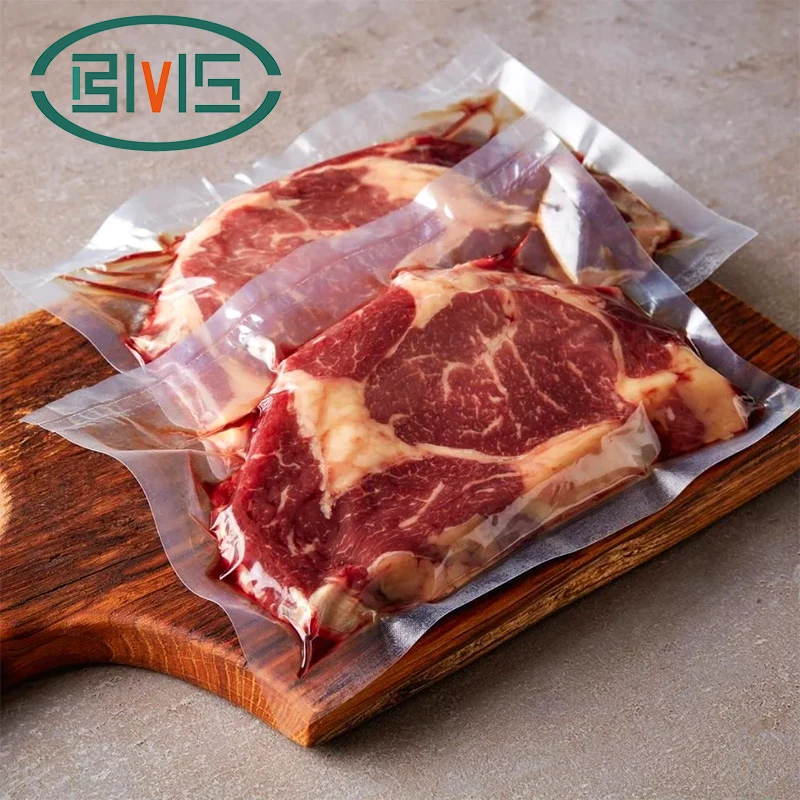Pros and Cons of Using a Vacuum Bag
2024-10-11
Vacuum bags are a popular storage solution that uses vacuum-sealing technology to remove air and compress items, particularly for clothing, bedding, and other soft goods. They are widely used to save space, protect items from dust and moisture, and improve organization. However, like any product, vacuum bags have their advantages and disadvantages. Let’s explore the pros and cons of using vacuum bags.
Pros of Using a Vacuum Bag
1. Space-Saving
The primary benefit of vacuum bags is their ability to significantly reduce the volume of bulky items. By removing the air from the bag, items like blankets, pillows, and clothing are compressed, allowing you to save up to 80% of storage space.
- Great for Travel: Vacuum bags allow you to pack more in your luggage, making them ideal for traveling.
- Efficient Storage: Ideal for seasonal clothing, comforters, or linens, vacuum bags can help you maximize storage space in closets, under beds, or in luggage.
2. Protection from Dust, Moisture, and Pests
Vacuum bags provide a sealed environment that protects stored items from dust, dirt, mold, mildew, moisture, and pests like moths.
- Extended Lifespan of Items: Protecting items from environmental factors helps preserve them for longer, reducing wear and damage.
- Ideal for Long-Term Storage: Items stored in vacuum bags remain clean and fresh, making them perfect for storing winter clothes or extra bedding during off-seasons.
3. Organization and Clutter Reduction
Vacuum bags allow you to organize and categorize your belongings easily. With their clear plastic construction, you can quickly see what’s inside without having to open the bags.
- Neat and Tidy: Vacuum bags help reduce clutter by keeping items in a compact, organized form.
- Easy to Store: Once compressed, vacuum-sealed bags can be stacked or stored in tight spaces, making organizing small apartments or homes easier.
4. Portability
Vacuum bags are lightweight and easy to carry, even when packed with compressed items. They make it convenient to move or transport bulky items without the need for large storage containers.
- Perfect for Moving: Vacuum bags help reduce the volume of your belongings, making them easier to pack into moving boxes or suitcases.
5. Affordable and Reusable
Most vacuum bags are cost-effective and can be reused multiple times, making them an affordable storage solution in the long run.
- Eco-Friendly: Since they are reusable, vacuum bags are a more environmentally friendly option compared to disposable storage solutions like plastic bags or shrink wraps.

Cons of Using a Vacuum Bag
1. Potential for Item Damage
While vacuum bags are great for compressing soft items, using them on delicate or structured items can cause damage.
- Wrinkles and Creases: Clothing stored in vacuum bags for long periods can develop wrinkles or creases, especially in fabrics like wool, silk, or leather.
- Loss of Shape: Items that rely on their structure, such as jackets with padding or certain types of bedding, may lose their shape when compressed for too long.
2. Limited Use for Certain Items
Not all items are suitable for vacuum storage. For example, delicate fabrics, fluffy materials like down, or items that need to "breathe" are not ideal for vacuum sealing.
- Not Ideal for Long-Term Storage of Certain Fabrics: Vacuum-sealing wool or leather items for long periods can affect their texture or cause deformation.
3. Risk of Air Leakage
Over time, vacuum bags may lose their airtight seal due to wear and tear, punctures, or faulty seals. If air leaks into the bag, the items may expand back to their original size, negating the space-saving benefit.
- Requires Proper Handling: Vacuum bags need careful handling to avoid puncturing or damaging the material, which can lead to leaks.
- Inconsistent Performance: Poorly manufactured vacuum bags may fail to maintain a vacuum seal for extended periods.
4. Requires a Vacuum or Pump
To properly use vacuum bags, you need access to a vacuum cleaner or a manual pump to remove the air from the bag. This can be inconvenient if you’re traveling or don’t have the necessary equipment on hand.
- Inconvenient for On-the-Go: Without a vacuum or pump, re-sealing the bags while traveling may be difficult.
- Added Effort: Using a vacuum to seal the bags adds an extra step compared to traditional storage methods.
5. Not Suitable for Fragile or Breakable Items
While vacuum bags are great for soft goods, they are not appropriate for storing fragile or breakable items like electronics, glassware, or delicate ornaments. The pressure created during vacuum sealing can cause damage to these items.
- Limited to Soft Goods: Vacuum bags are best suited for compressible materials like clothing, bedding, or towels, but are not effective for all storage needs.
6. Potential for Mold Growth in Improper Conditions
If moisture is present inside the vacuum bag before sealing, it can create an environment where mold or mildew can grow. This is especially concerning in humid environments or if the bag is not completely dry before sealing.
- Risk of Trapped Moisture: It’s essential to ensure items are completely dry before sealing them in vacuum bags to prevent mold or mildew buildup.
Conclusion
Vacuum bags offer a range of benefits, especially when it comes to space-saving, organization, and protecting your items from dust and moisture. They are particularly useful for storing seasonal clothing, bedding, and for travel. However, they are not suitable for every type of item, and care must be taken to avoid damaging delicate fabrics or items that could lose their shape.
In summary, vacuum bags are a great option for short- to medium-term storage of soft goods, but they should be used with care to avoid potential downsides such as wrinkles, loss of shape, or mold growth. When used correctly, vacuum bags are an effective and affordable storage solution.


